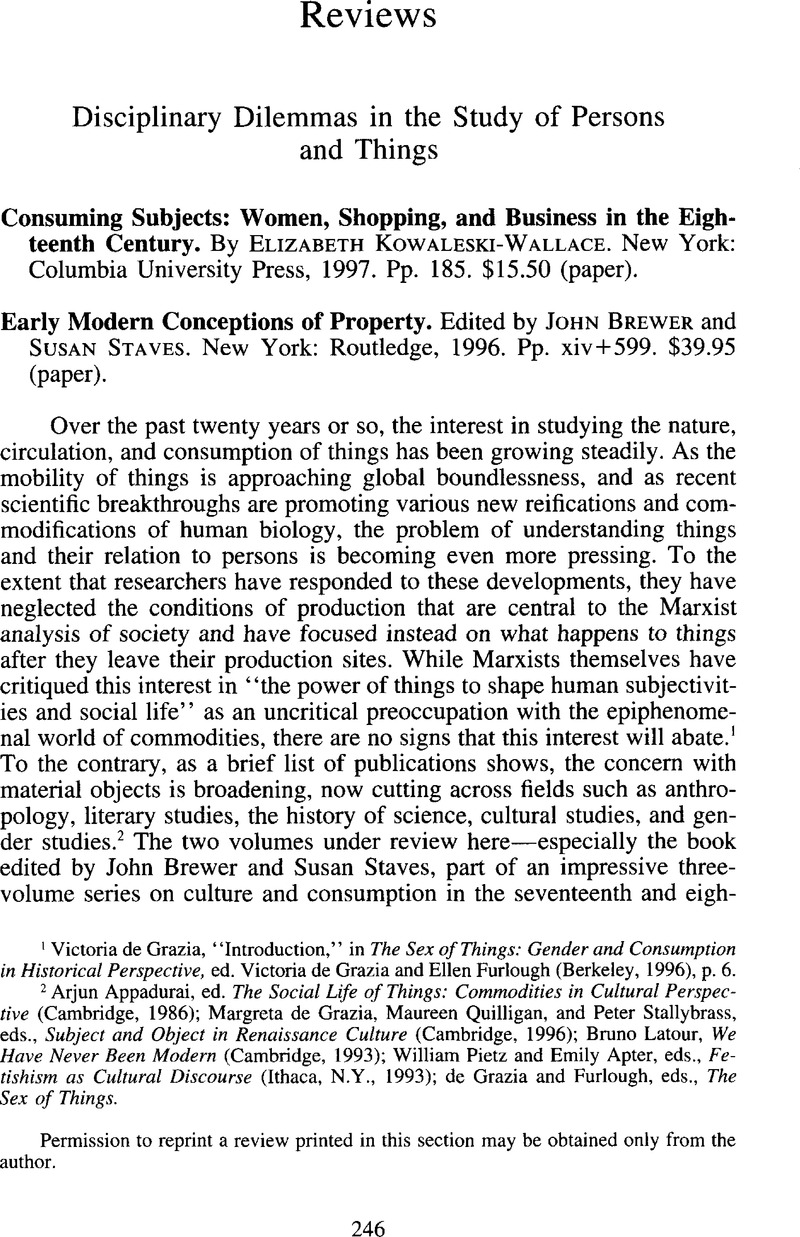No CrossRef data available.
Published online by Cambridge University Press: 10 January 2014

1 de Grazia, Victoria, “Introduction,” in The Sex of Things: Gender and Consumption in Historical Perspective, ed. de Grazia, Victoria and Furlough, Ellen (Berkeley, 1996), p. 6Google Scholar.
2 Appadurai, Arjun, ed. The Social Life of Things: Commodities in Cultural Perspective (Cambridge, 1986)CrossRefGoogle Scholar; de Grazia, Margreta, Quilligan, Maureen, and Stallybrass, Peter, eds., Subject and Object in Renaissance Culture (Cambridge, 1996)Google Scholar; Latour, Bruno, We Have Never Been Modern (Cambridge, 1993)Google Scholar; Pietz, William and Apter, Emily, eds., Fetishism as Cultural Discourse (Ithaca, N.Y., 1993)Google Scholar; de Grazia and Furlough, eds., The Sex of Things.
3 For a skeptical glance at the claim that the eighteenth century constitutes the beginning of consumer culture, see Styles's, John “Manufacturing, Consumption, and Design in Eighteenth-century England,” in Consumption and the World of Goods, ed. Brewer, John and Porter, Roy (New York, 1994), pp. 527–54Google Scholar.
4 Foucault, Michel, Discipline and Punish (New York, 1979)Google Scholar. Kowaleski-Wallace suggests, e.g., that the panopticon provides a useful way of conceptualizing the disciplinary dynamics of the tea table (pp. 26–27). This raises not only chronological issues (Foucault sees the panopticon as a decidedly late eighteenth-century phenomenon) but also conceptual problems, as Kowaleski-Wallace's oxymoronic coinage “panoptic voice” (p. 27) illustrates.
5 The following passage illustrates this perplexing quality: “If before the cup conveyed the sense that a woman's fluidity was being mastered and ceremoniously presented, it now contains another's bodily fluids. To drink the slave's blood is to fail as a woman and as a mother, but it is also to alter the ritualistic symbolism of the tea table” (p. 48).
6 Juxtapositions of this kind can be found, e.g., in the introduction (pp. 13–15), in the argument on pornography and consumerism (pp. 99–108), and in the final chapter (pp. 145–58).
7 See Jameson's, FredricPostmodernism, or, The Cultural Logic of Late Capitalism (Durham, N.C., 1992), p. 188Google Scholar.